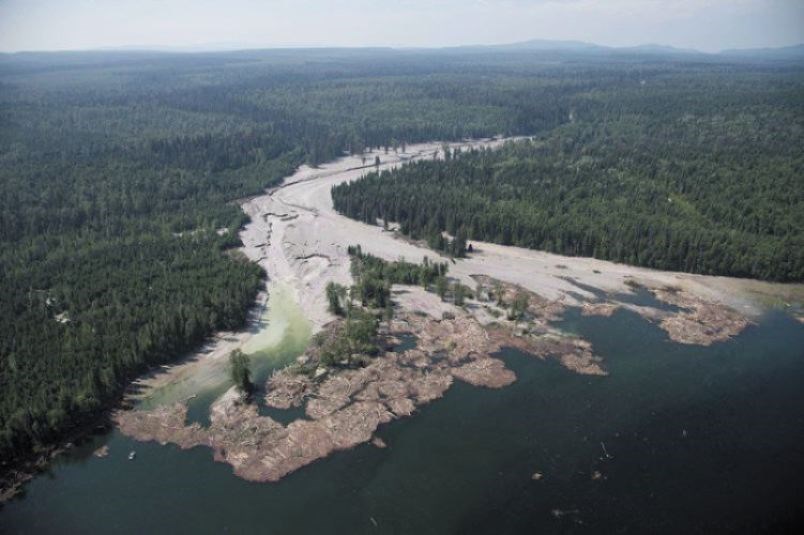The clock continues to count down on the window remaining to lay environmental charges following Imperial Metals' Mount Polley mine dam failure.
One of the largest mining-dam failures in the world in the past 50 years, the Aug. 4, 2014, dam collapse in the B.C. Interior shook the industry and caused concern among the public, First Nations and environmental groups that aquatic life would be harmed, particularly salmon that use the Quesnel Lake system to spawn.
The three-year deadline to lay charges under B.C. laws passed in 2017.
Under federal law, there is a five-year window to lay charges under environment and fisheries laws, leaving one year to do so.
"We are concerned that four years later, following the largest mining spill in Canadian history, there are still no charges whatsoever at any level of government," Mining Watch Canada official Ugo Lapointe said Tuesday.
"It sends the wrong signal that any mining company can do whatever they want -- screw up massively and not face consequences," added Lapointe.
He said Mining Watch is pressuring authorities -- in particular, Environment Canada and Fisheries and Oceans Canada -- to lay charges.
In a written response to Postmedia, Environment Canada said a joint investigation with the two federal agencies and the B.C. Conservation Officer Service continues to determine whether federal environmental and wildlife laws were breached and they will take appropriate action based on their findings.
"As the matter is currently under investigation, we cannot provide further information at this time," Environment Canada spokeswoman Jenn Gearey said in an email.
Gearey added that it was not unusual for an investigation of this nature to take several years to complete.
In a written response, B.C. Ministry of Environment spokeswoman Danielle Bell said the province recognized the timeline for this investigation was significant, but that timing depends on an investigation's complexity.
"Both levels of government are committed to a thorough investigation within the time frame of the federal statute of limitations," said Bell.
Mining Watch said it had no insight on whether charges would eventually be laid.
Information compiled by Mining Watch Canada from federal government data shows that between 2011 and 2017 there were 12 penalties issued to mining companies. One penalty has been issued so far in 2018.
Penalties are almost always issued after a company reaches an agreement with the federal government and pleads guilty to charges, noted Lapointe.
The largest penalty to a mining company in Canada was $7.5 million issued to Cliff Resources in 2014 for the Bloom Lake Mine spills over four years. The company pleaded guilty to 45 charges under the Fisheries Act, including a breach of a tailings pond.
The largest fine in British Columbia was $3.4 million handed to Teck Metals in 2014. The company plead guilty to three offences under the Fisheries Act, including multiple incidents resulting in the discharge of 125 million litres of effluent into the Columbia River between 2013 and 2015.
The failure at the Mount Polley gold and copper mine's earth-and-rock dam spilled millions of cubic metres of mine effluent and tailings into Quesnel Lake, after scouring nine-kilometres of Hazeltine Creek, where trout and coho salmon spawned.
The mine effluent and tailings comprised finely-ground rock, remaining after the milling process to extract gold and copper, that contain potentially toxic metals.
Imperial Metals has spent millions of dollars to rehabilitate Hazeltine Creek.
The tailings dumped into Quesnel Lake remain at the bottom of the lake.
Studies on the effect of the spill are expected to continue for years.



